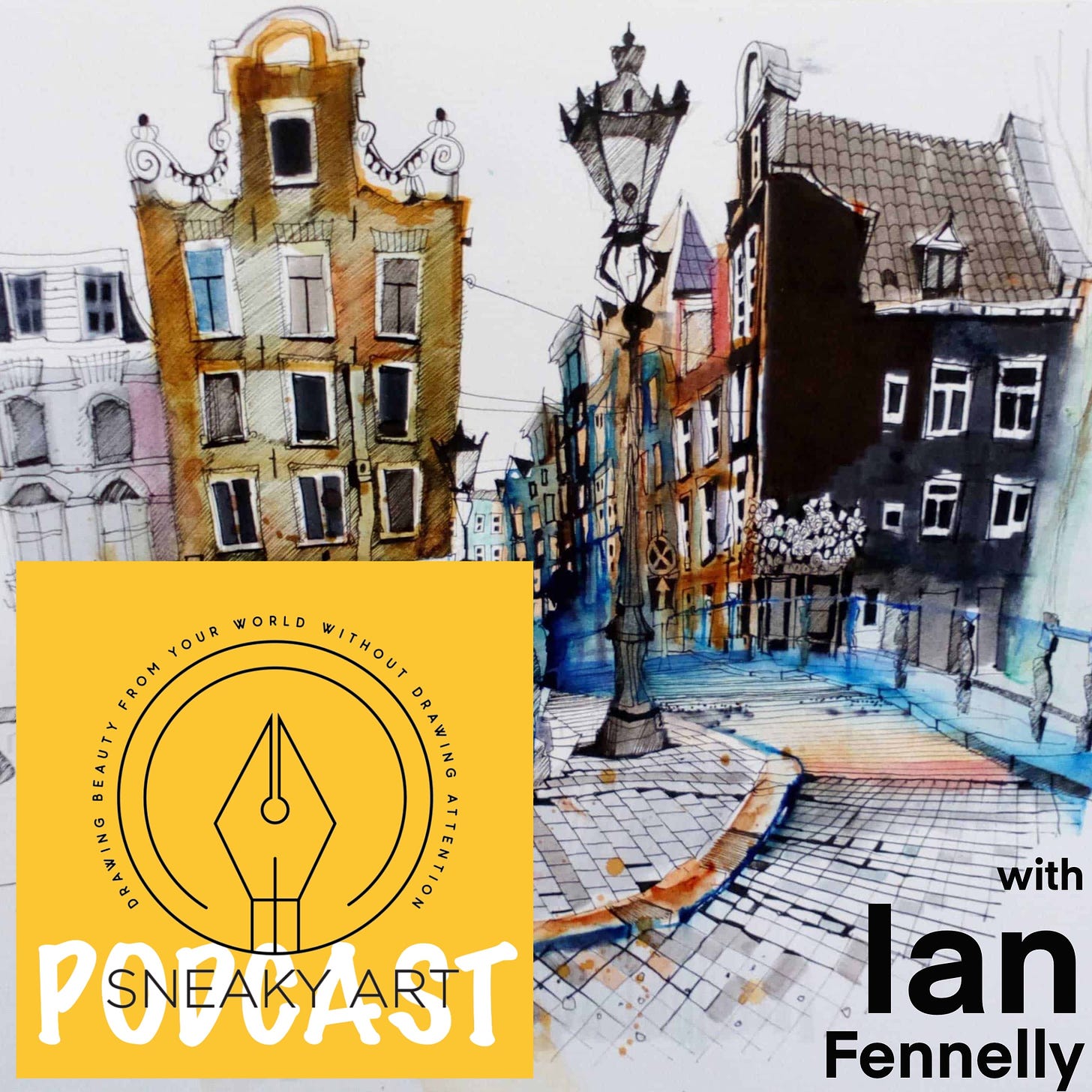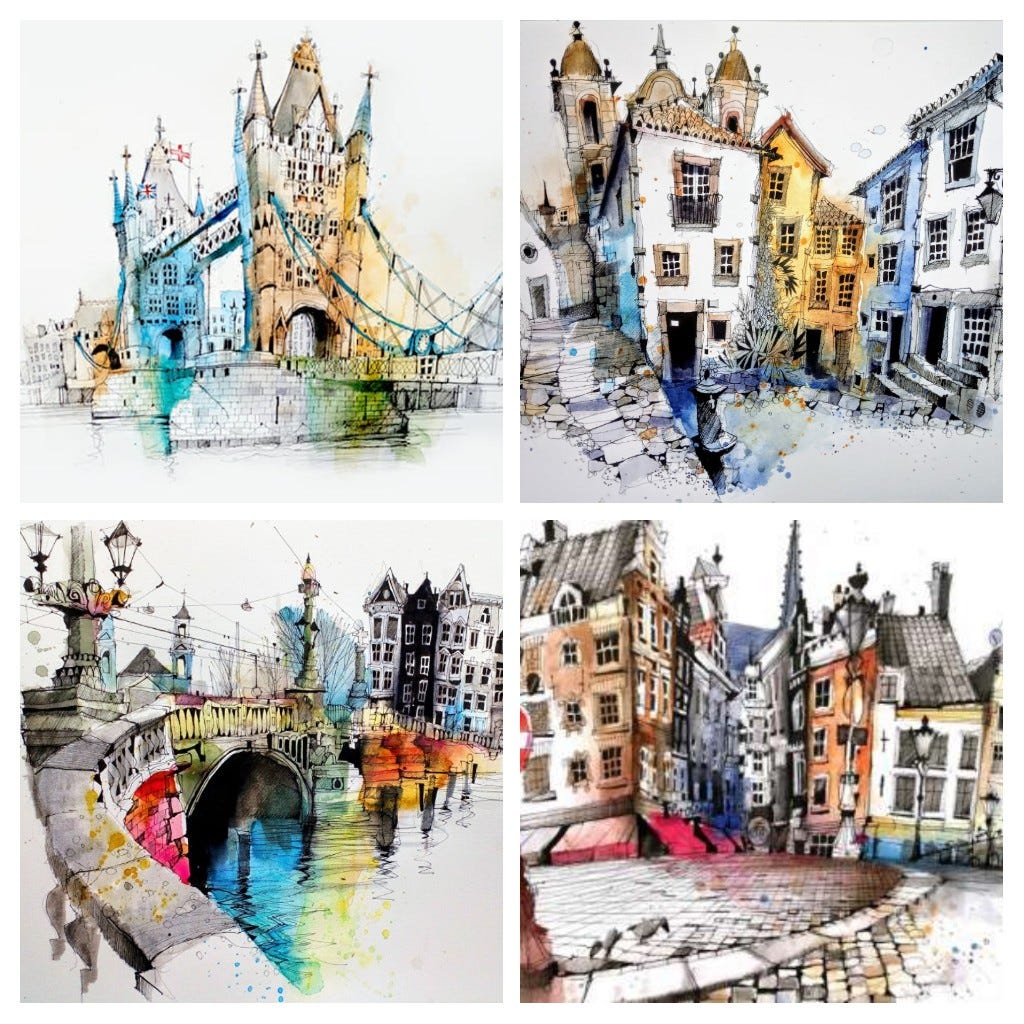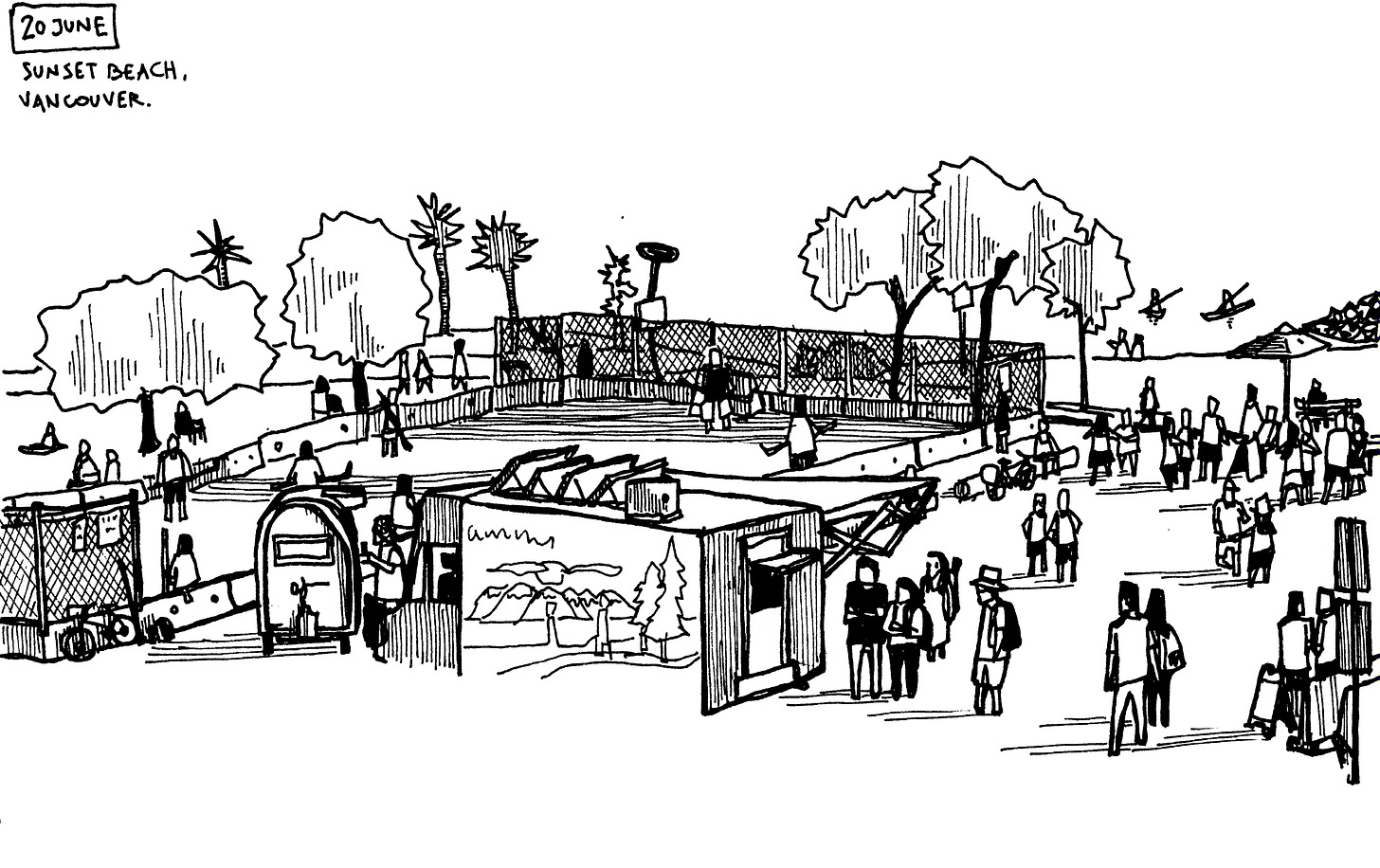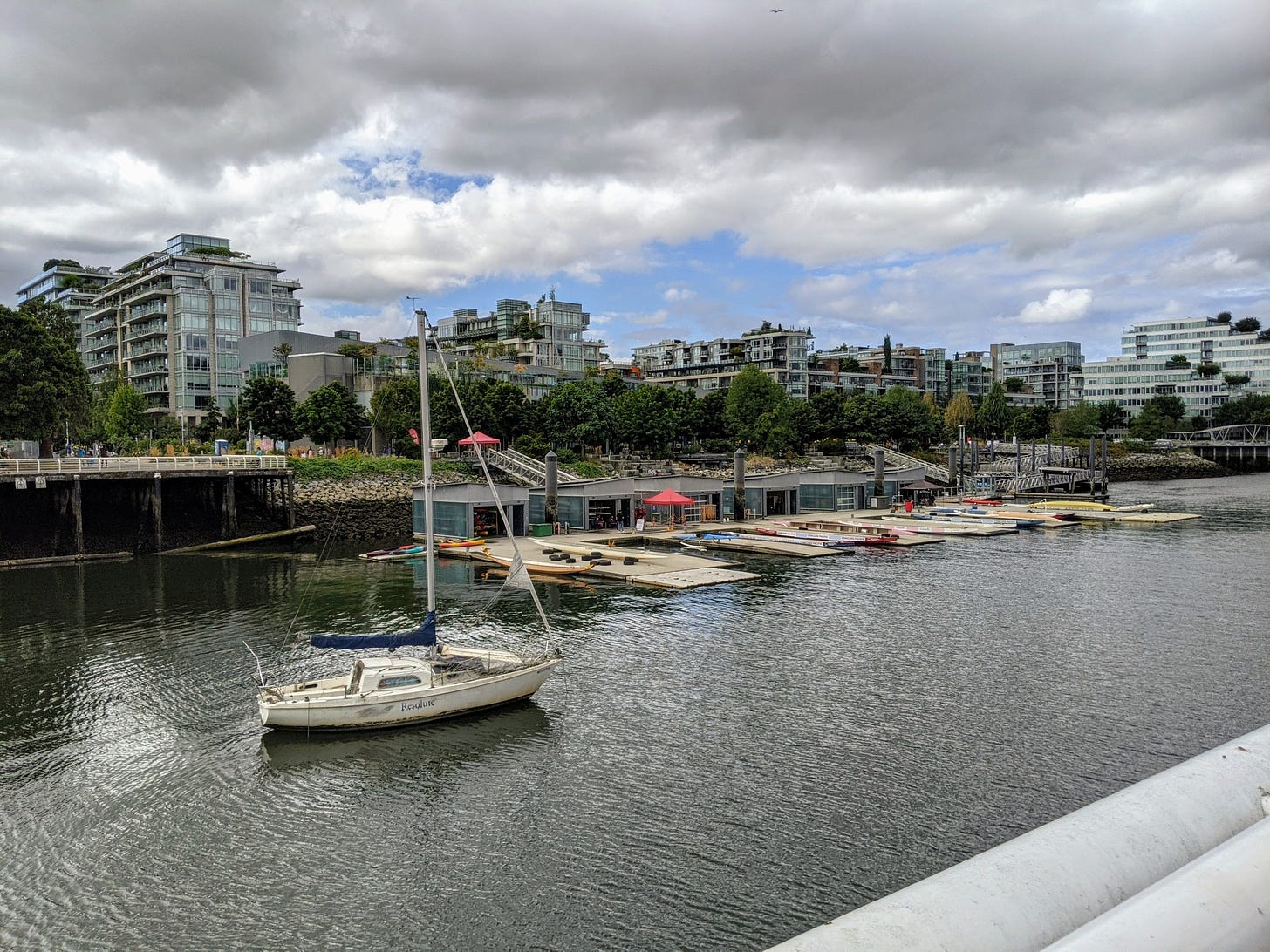58 - Looking in Layers with Ian Fennelly
Hello and welcome to the SneakyArt Post. This is a space where I share my art, and the things I learn in my journey of self-education to become an artist.
If you like what you read, share it with a friend!
This week, I’m sharing the new episode of the SneakyArt Podcast, some ideas about drawing people vs not (as discussed with my guest), and the latest commission work.
Ep 23 - Looking in Layers with Ian Fennelly
In this episode, I speak with Ian Fennelly, an artist and urban sketcher in the UK. We talk about Ian’s unique art style, the way he sees his world, and the decisions he makes when representing it on paper.
Ian paints his urban environments in vivid, rich, and sometimes fantastical color-scapes. His lines and colors cleverly contrast the tussle between representing objective reality and subjective emotions. As Ian likes to point out, he is not recreating a scene, but creating art from a scene.
The title of this episode is based on the title of his latest book and is an apt description of his artistic process. His paintings are the result of looking and looking again, patiently building layer upon layer of observation, emotion, and artistic judgment.
Listen to our conversation on your choice of streaming service, or catch a link below.
Spotify | Apple | PocketCasts | Google | Web | Gaana
Transient Phenomena in a Timeless Landscape
In the second half of our conversation, Ian and I talk about how urban-sketchers filter their world when putting it to paper. As a result, a piece of art is not only a representation of what is seen, but also a reflection of the artist’s personality - their preferences, their biases, their weaknesses, and their strengths. An urban sketch is also a function of its time and environment. How the artist felt at that time, the emotions and ideas running through their mind while on location, the temperature and humidity, whether they were comfortable or jittery, all of it is represented in the work, whether in overt or subtle ways.
So what does it mean that Ian’s work, although it features busy urban locations, lacks human presence? His answer fascinated me. I am only paraphrasing here, and you should listen to it in full in the episode. He said, “the people are right there, but just out of sight. There’s someone behind the windows in the buildings, the pubs are packed with people, and someone is just about to come around the corner at the end of the street.”
He describes his scenes as a set that is temporarily devoid of its main characters. He does this because people are a fleeting, transient presence, some for a few minutes, others only for a few seconds. If he were to draw one person, then another afterwards, they would not represent any singular moment in reality. So, the objects he features are the ones that don’t move.
As I discussed with him, I have two motivations for drawing people in my urban landscapes, and my second reason (below) is incidentally exactly the reason why Ian chooses not to draw people.
The urban environment is designed for human activity.
This is an existential argument I make, that elements in an urban environment have no purpose other than that granted by the human context. Is a cafe still a cafe when no one is drinking coffee inside? Is a traffic light still a traffic light if there is no one to wait below it? Is a building still tall without reference to the human figure?
I have discussed this with some other guests before, notably in Ep 5 with Donald Colley. Donald, like me, spotlights human activity in his art. We talked at length about why we think it is necessary to do so. Donald sees the artist’s job as depicting the human condition. In our conversation, he goes on to cite the historical centrality of the human figure to all design, whether it is the shape of a tea cup, the size of a chair, or the height at which we fix a door-knob.
Creating a moment out of time.
The second reason I like to include human activity is precisely the reason Ian does not. When I draw an urban scene - like the one below at Sunset Beach - I am weaving together the human activity I see over the course of time I spent there. These people did not occupy those positions at any single moment. For example, when I drew the person waiting to pick up their food order, the couple dancing behind them may have already left.
The drawing then is my creation - a moment that did not physically exist - stringing together impressions gathered over the time spent on location.
To be clear, whether you include people in your drawings or not, these are artistic decisions. There is no objective good or bad, or right or wrong thing to do. I posed the question to Ian out of curiosity - wanting to know if his decision was deliberate or unconscious. It is always interesting to learn what motivates someone to do a certain thing with their art, and I respect anyone who has clearly thought through their position.
The Boats of Vancouver
I have been commissioned by a marina construction company to make art of their most popular docks and marine works. I shared one last week that I drew in Victoria, on Vancouver Island. This week, I drew the Dragon Boats Dock at False Creek.
I went early in the morning to do this sketch, to avoid both tourists and sea-gulls. I considered between 3 different locations to draw from, considering the different angles and points of view that would decide the larger shapes on my page. What would they say, what would they hide? I was lucky my final choice was also a place where I could sit comfortably, because this took me a while to do!
Drawing boats that are anchored in the water is an interesting challenge. While the water was relatively calm, the boats were too. But as rowers and water-taxis began to ply on False Creek, the prominent boat featured in my drawing began to revolve around its anchor, returning to its original position in a cycle of perhaps 3-4 minutes. So I had to draw it the way I draw people - big shapes quickly, and inner details to the best of my observation.
The line work on the piece above is receiving appreciation on Instagram, so let me share my two rules around linework:
Heavier lines for things that matter
Lighter lines the further back I go, and the further away I go from the subject.
I follow these rules quite consistently, and they help me focus in my work as well as direct a viewer’s attention on my page.
Memorializing a Special Day
My work is best when I am drawing on location. But there is a lot of work you cannot do on location. So in the commission work I do at my desk, I try my best to approximate the looseness and spontaneity of my on-location style.
One of my commissions right now is interesting because it was meant to be drawn on location. I was invited to a couple’s wedding in Wisconsin, to take in the proceedings and make SneakyArt of key moments and primary characters. Alas, COVID intervened, and the wedding was postponed. The couple ended up having a small, private ceremony but by that time, I had already moved away and attending was not possible.
I am glad they reached out afterward to have me make drawings from the official wedding photos. I am doing them as 3 separate collages on 8x10” fine art paper. Below is a video of the first.
You will notice this piece has pencil underlines, which I am using only because it is -
a collage, and therefore a careful construction of disconnected images
drawn at my desk, and doing pencils lets me be loose with my inklines and not over-deliberate
I used my Sailor bent-nib fountain pen for this piece. The bent nib gives out more or less ink based on the angle at which it touches the paper. So you can get all kinds of different line weights out of the same pen. Fun!
Best of the SneakyArt Post
This is part 3 (of 5) in the Best of… series, where I link to my favorite back-issues of this newsletter. A SneakyArt Drop is a newsletter issue in which I don’t use words. It is for the times that words just don’t cut it. Here’s the first one.
Here’s another, in which there are some words, but only in the form of haiku.
Future Plans
I have some exciting podcast plans that I am discussing with members of the SneakyArt Club. This is the group of people that supports my work monthly via my BuyMeACoffee page. I treat them as a focus group for my ideas and drafts of writing, both for the podcast and for my next book of SneakyArt (which I am working on at the moment). They give me feedback and suggestions, and we discuss all the episodes and our thoughts about them.
If this sounds interesting to you, check out details on my BuyMeACoffee page. There are several benefits to signing up, and membership begins at the princely sum of one cup of coffee per month.
If you like the idea of a creator economy, with a one-to-one relationship between creators and fans, this is a good way to be part of it. :)
That’s all from me this week. Thank you for your time and attention. I’ll see you next week, with fresh lines and lines about lines.









